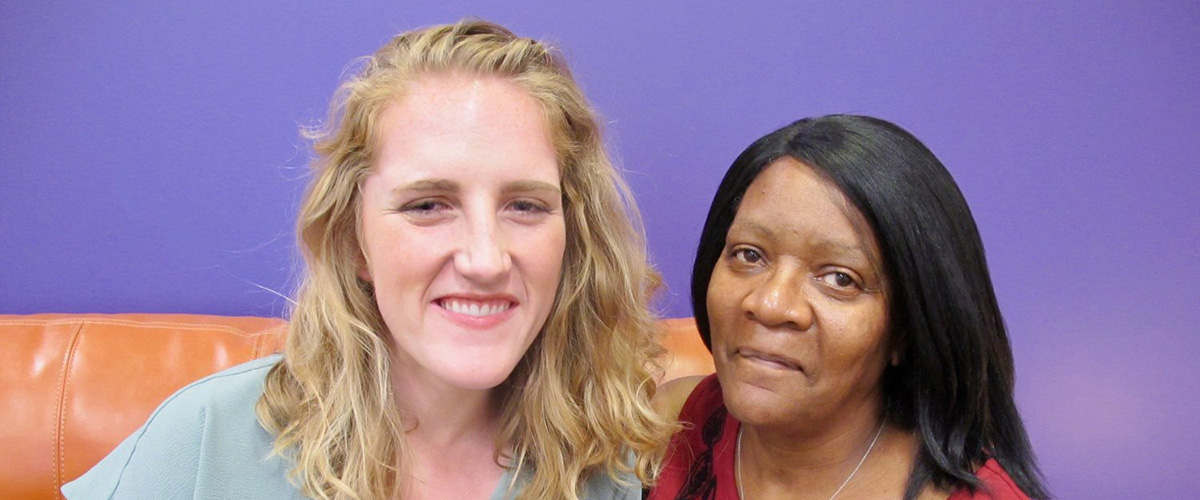Jail Populations Victims Women in Jail September 21, 2018
A special public defenders office set up to help women is keeping families together.
When Linda Meachum was arrested in Tulsa, OK last year for not paying her court fees and fines, she prepared to say goodbye to her two young granddaughters.
“I was doomed,” Linda told me. “I was fixing to be sent to prison to do the term of four years.”
Women are the fastest growing population behind bars in the United States today. And like Linda, nearly 80 percent of women in jail are mothers, according to a 2016 report by the Vera Institute of Justice. The same report says that women are now held in jails in nearly every jurisdiction across the country. Most of them are single mothers or the primary breadwinners for their families.
The devastation wrought by this trend is apparent in Oklahoma, which has the highest incarceration rate in the world. For over 25 years, Oklahoma has put more women behind bars per capita than any other state.
In Tulsa, the jail has gone from housing an average of 8 women per day in 1970 to over 300 women per day in 2017. Most of the women have been charged with low-level, nonviolent crimes like shoplifting or failing to pay court fees.
Separated from their families and forced to leave their work, these women sit idle in large “pods,” watching TV or chatting as they wait for their cases to be resolved. It was in the Tulsa County jail this spring that I met Kami Barrett, a 30-year-old mother of three.
“Not being able to see my kids, that’s the hardest thing,” she told me. “I had them every day. Now I don’t have them at all. That’s what sucks.”
Her youngest daughter, aged five, was staying with Kami’s sister while her former partner was taking care of her eight and nine-year-old. Such separation of siblings from mothers can have serious consequences. Kids with parents behind bars aresix times more likely to enter the criminal justice system themselves, and the numbers are worse for children of incarcerated mothers than fathers.
Kami could have walked out of the jail that day if only she could afford the $5,000 bond prescribed by the judge. But without the money, she was stuck behind bars, waiting for the court to decide whether she was guilty. Nationally, women are less likely than men to be able to bond out of jail.
Women behind bars are also more likely to have a history of trauma and abuse and have higher rates of mental health and substance abuse disorders.
For Linda Meachum, that combination meant her fate was all but sealed. The 57-year-old had been in prison twice before and her health was failing. A survivor of domestic violence, she told me she struggled with substance abuse and post-traumatic stress disorder while living on less than $250 a month.
When the court mandated that she pay the government $40 every month as part of her probation in addition to the court fines of a previous case, she said she reached a breaking point. When Linda stopped paying the court fee, the sheriff issued a warrant for her arrest.
But Linda was one of the lucky ones. She ended up spending just eight days in jail. With the help of Still She Rises, a mother-focused law firm in Tulsa, she was able to convince the judge to give her a second chance. Since being released in January, she has completed a 60-day rehabilitation program and is doing community service in lieu of paying the court fines. She even has plans to start a prison ministry to help women behind bars.
But not every woman arrested is so lucky. There are 212,000 women incarcerated in prisons and jails today—30 percent of the total number of incarcerated women worldwide. It is time we start hearing their voices and helping them find their way back to their families.
*Nissa Rhee is a reporter based in Chicago whose work has appeared in The Christian Science Monitor, Chicago Reader, and Radio Netherlands Worldwide. She reported on women in Oklahoma prisons for 70 Million, an open-source podcast from Lantigua Williams & Co., made possible by a grant from the Safety and Justice Challenge at the John D. and Catherine T. MacArthur Foundation.


